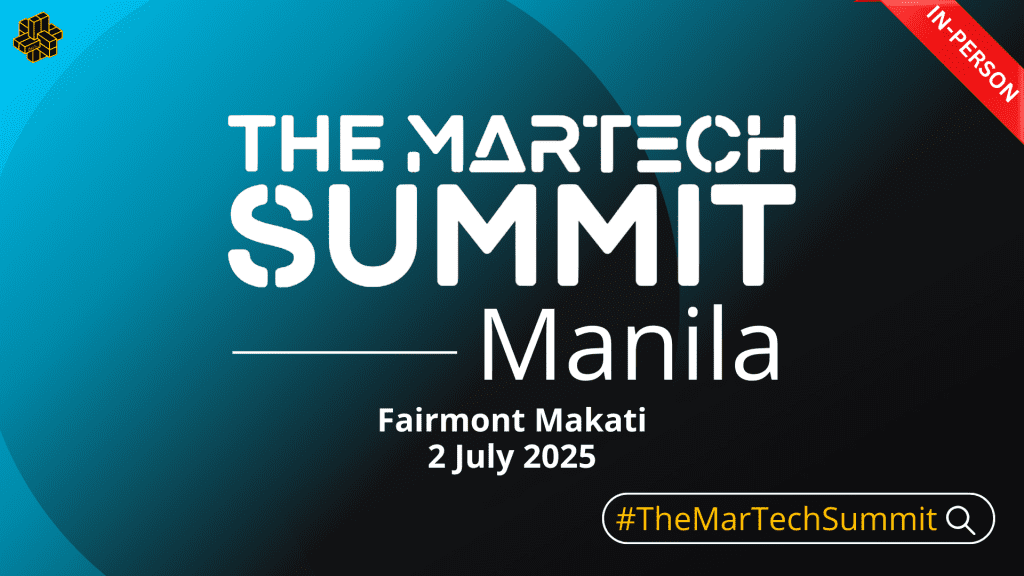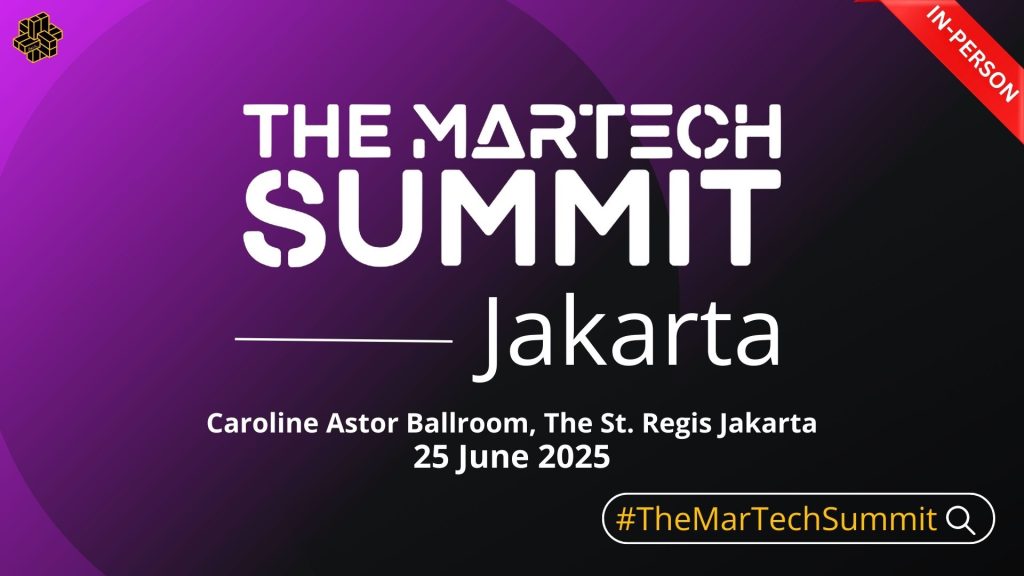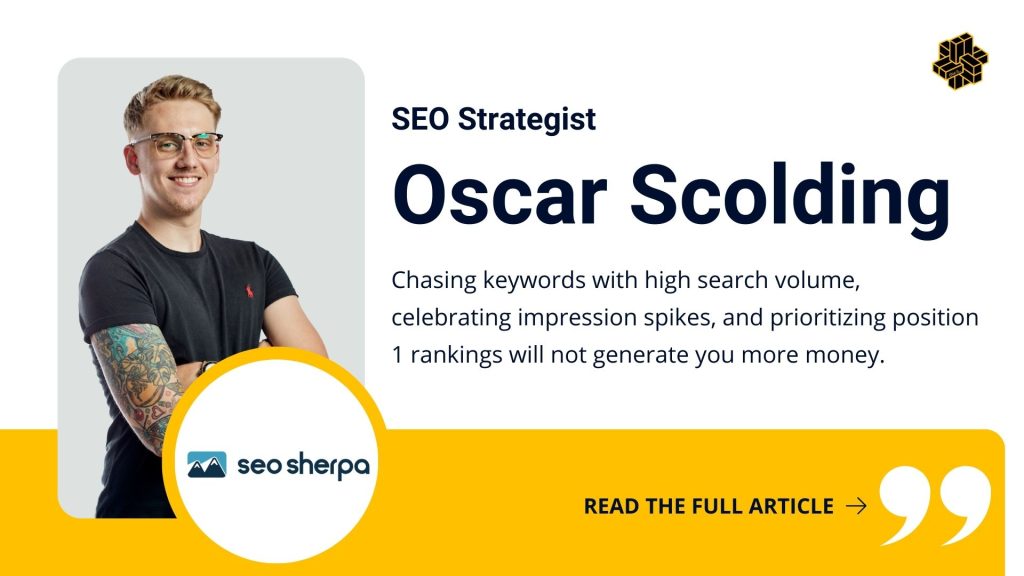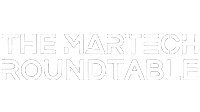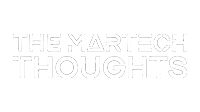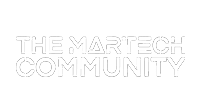Unveiling Insights: Answers to Your Burning Questions from the Summit
Over 150 MarTech & CX leaders from across the UK & Europe, spanning all industries looking to Unlock the Full Potential of MarTech for a Unified Customer Experience. Featuring 10 insightful talks and panels delivered by 20+ MarTech & CX thought leaders, It’s an unparalleled opportunity for like-minded professionals to connect, exchange experiences, and discuss the latest trends and challenges. Now, welcome to our summit’s aftermath—Join us as we unravel the mysteries and shed light on the lingering questions posed to the brilliant speakers who captivated us during the summit!
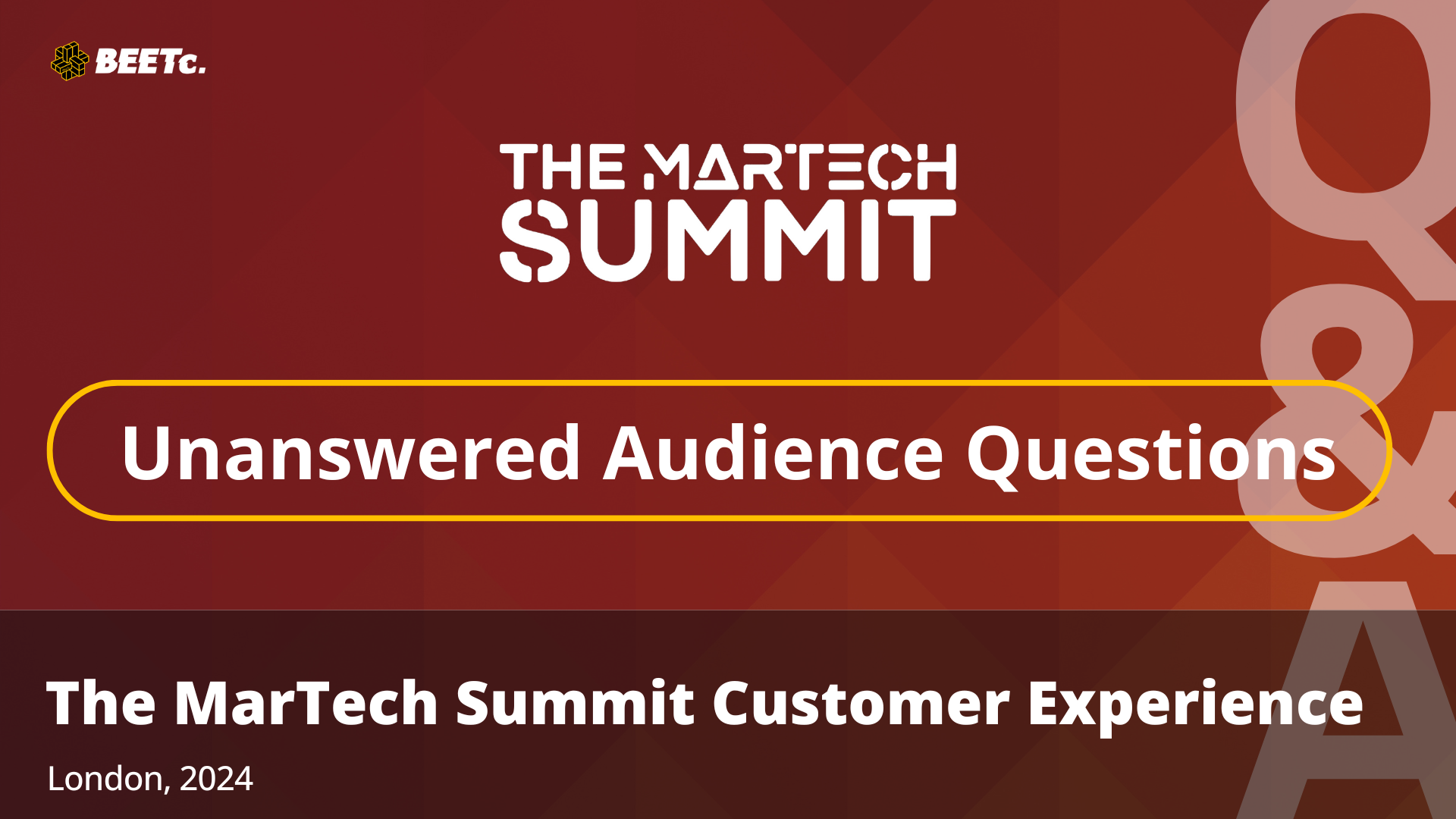
Unanswered Q&A from The MarTech Summit Customer Experience London
Fireside Chat | [Marketing Automation] Revolutionising Engagement & Mastering Customer Interactions with Dynamic Marketing Automation
Speaker:
Deon Pillay, Head of Marketing Technology, Enablement, and Governance, Legal & General Investments Management
Taha Baba, Digital Marketing Automation Officer, UNHCR, the UN Refugee Agency
❓Marketing is associated with creativity, traditionally considered opposite of automation. How much ‘should’ we automate?
Taha Baba: Automation in marketing should be implemented strategically to enhance creativity rather than stifle it. Routine and repetitive tasks, such as email campaigns, social media posting, and data analysis, are ideal for automation. This allows marketers to focus on creative strategies, content creation, and innovative campaign development. The balance lies in automating processes that do not require human touch while preserving areas where creativity and personal interaction are essential. In other words, you should consider automation as a tool to free up your time to drive more creativity.
❓With so much automation and exposure of technology to customers, where do you see Personalization and Human connect find its place in the right way?
Taha Baba: Personalization and human connection remain critical despite the rise of automation and technology. Effective personalization involves using data-driven insights to tailor experiences and communications to individual preferences and behaviors. However, maintaining a human touch through empathetic customer service, authentic brand storytelling, and interactive engagement is crucial. The right balance, which could be achieved by enhancing your segmentation framework and selection criteria, will ensure that customers feel valued and understood, not just processed by a machine.
❓There is a fear of missing out (FOMO), so how do businesses remain relevant without using the new shiny new thing?
Taha Baba: Businesses can remain relevant by focusing on their core values and understanding their customers’ needs deeply. Instead of chasing every new trend, they should prioritize adopting technologies and strategies that align with their long-term goals and enhance customer experience. Consistent value delivery, innovation in relevant areas, and adapting proven methods are more sustainable than constantly pivoting to the latest fad.
❓Taha – how do you assess that teams are properly using your existing martech? And then help them use it better?
Taha Baba: Do the matching exercises by assessing whether teams are using martech features effectively. This involves regular audits, usage analytics, and feedback sessions. Another way is by reviewing KPIs tied to martech tools, which can highlight areas of underutilization or inefficiency.
Building capacities and opening eyes to unused functionalities are the keys to helping teams use these tools better! Provide continuous training, create user-friendly documentation, foster a culture of sharing best practices, and have super user groups.
❓Is there a difference in tools for sales enablement and marketing enablement e.g., Seismic? Do you think we need that distinction?
Taha Baba: There is a distinction between sales enablement and marketing enablement tools, as each serves different purposes. Sales enablement tools like Seismic focus on providing sales teams with the resources, content, and insights needed to engage prospects and close deals. Marketing enablement tools, on the other hand, are geared towards creating, managing, and distributing marketing content and campaigns. The distinction helps in tailoring tools and strategies to the specific needs of sales and marketing functions.
Deon Pillay: Yes, there is a difference between sales enablement and marketing enablement, and this distinction can be important depending on the specific needs and structure of your organization.
Sales Enablement is about equipping, training, and coaching sales reps to successfully sell. It plays a critical role in improving sales motivation and productivity. Sales enablement tools, like Seismic, provide resources, content, and insights to help sales teams engage customers and drive revenue growth.
On the other hand, Marketing Enablement is about empowering your marketing team to be more productive in their roles by creating a system that enables them to work more efficiently. It involves providing marketers with everything they need – from technology, tools, processes, content, training, and analytics – to increase pipeline and drive sales. Marketing enablement helps marketers create better campaigns and content, and better support sales.
Seismic, as a sales enablement tool, is highly rated for its features and ease of use. It offers an unparalleled mobile experience, content engagement analytics, and information security as well as live insights, you can build out training through Seismic learning, coach sales teams through the Seismic meetings capability, it also empowers the sales teams to customize and build pitch decks and share content with Clients with the ability to gain live insights. However, such a tool’s effectiveness depends on the quality of the uploaded content. This is where Seismic becomes a Marketing enablement tool, by using Seismic enablement planner ensures clearer briefs removing email traffic, it’s a great system to give you an overall view of task and projects across marketing, by function and channel, you can create workflows to ensure good governance and compliance sign off , a central content repository with pre complied material curated by client, country and the ability to automate document production, think strategy decks, Factsheets etc
The need for a distinction between sales enablement and marketing enablement tools depends on your organization’s structure, goals, and the specific roles of your sales and marketing teams. Both types of enablement are crucial for a business’s success, and using tools like Seismic can help streamline these processes. However, it is important to remember that the tool is only as effective as the strategy and content that you put into it.
❓To what degree do you believe that there is a skills gap in being able to fully harness the power of our martech stack?
Taha Baba: There is often a significant skills gap in fully harnessing the power of each martech stack. Let’s face it, no one is fully utilizing their system, and there are always unused features and capabilities which is acceptable at a certain level. Addressing this gap requires ongoing training, hiring specialized talent, and fostering a culture of continuous learning. The end user is the most important part of the puzzle, and narrowing this gap to the minimum is crucial before moving to the next step. By bridging this skills gap, organizations can maximize the return on their martech investments and drive more effective marketing strategies.
❓How do you make the pitch doc like the prospect’s brand? To what extent?
Deon Pillay: To make a pitch document align with a prospect’s brand, ensure you:
- Understand the Brand: Research the brand thoroughly. Understand their mission, vision, values, and unique selling propositions. This will help you align your pitch with their brand identity.
- Use Brand Colours and Logo: Incorporate the brand’s colours and logo into your pitch document. This will make your document visually align with the brand. However, ensure you have the right to use their logo and other brand elements.
- Use Brand Language: Every brand has a unique way of communicating. Try to understand their tone of voice and incorporate it into your pitch. This could be formal, informal, playful, serious, etc.
Show Understanding of the Brand: Demonstrate in your pitch that you understand the brand and its audience. This can be done by discussing how your proposal aligns with their brand strategy and appeals to their target audience.
Instead of using PowerPoint use Ceros to create an immersive experience. Customize Content: Tailor the content of your pitch to reflect the brand’s offerings, challenges, and goals. This shows that you’ve done your homework and understand their needs.
The extent to which you do this depends on the opportunity size and the nature of your relationship with the prospect. If it’s a large opportunity or a long-term prospect, it might be worth investing more time in customizing your pitch. However, always ensure that while aligning with the brand, your own message doesn’t get lost. The pitch should still clearly communicate your unique value proposition and how it benefits the prospect. Remember, the goal is to show alignment with the brand, not to lose your own identity in the process.
Panel Discussion | [Customer Centricity] Crafting a Customer-Centric Culture and Proving the Power of CX Leadership
Speaker:
Rachael Browning, Head of Customer Experience, ESPO
❓Putting customer in the Centre – What does it actually mean from an organization behaviour and change mindset perspective? How CX discussion can help drive it?
The change in terminology, from that’s our process or that’s how we do it, to how can I fix that, how can we resolve it. Having it as a value and reviewing customer focus in 121’s APR’s and team meetings. Linked to our EOTY.
❓When defining the KPIs, how you convince higher management to have metrics that aren’t directly linked to ROI? Can you please give examples of those KPIs?
KPI Examples: C-SAT Scores, NET Promoter, Recommendation Scores, National Benchmarking against the UK Customer Satisfaction Index, Staff Retention. Reduction in avoidable demand metrics.
❓Any tips you can share on how to manage continuous improvement initiatives in an impactful way across the organization?
-Engage People, from those taking the enquiry or dealing with the process
-Seek to understand. Don’t solutionism until you fully understand the process
-Do good old fashioned Journey mapping, using it to identify every step of the process and each touch point from a customer and an organisational perspective. What adds value and what adds friction and what is essential from a legal or regulatory point of view.
-Have the customer at the centre of your design
-Set up a cross functional CX Improvement group
-Share success and results of improvements
-Remind people of how far you have come, do you remember when we had to do that, but now look how much easier it is
❓Does everyone in the organization not need to be a CX leader? How would that look like rather than just one person identified as CX leader?
I think everyone plays a part in being an ambassador for customer experience, but not necessarily leaders. I want people within the organization to think about everything—processes, communication—through the lens of the customer. Roles and job descriptions should reference customer experience. Embed it as an organizational value, where customer experience and contributions to it are both recognizable and recognized.
❓How does UX person transition to the CX leader in an organisation?
Gain a broad understanding of both the business and the customer journeys. Recognize that CX is not just a function or part of a process, but should consider the end-to-end journey with all the relevant touchpoints (both internal and external). Be able to collaborate and articulate issues and improvements clearly, highlighting the benefits.
❓Follow up question to Rachael: if to make the amount of repeated businesses as a measure; does it mean client experience staff are part of sales force?
We have a dedicated account management team in addition to our CX team, but they are separate. Therefore, repeat business and retention sit as organizational KPIs rather than departmental KPIs. Wider insights show us that investment in service excellence, including consistency, emotional connection, and ethics, all contribute to the overall CX experience for a customer. For us, knowing we are delivering these through our CX feedback, and seeing the increased level of retention and percentage increase in repeat spend, is a logical financial/CX KPI.
Throughout the event, your inquiries ignited conversations and fueled our curiosity. Your engagement has truly enhanced the experience for all involved. For those unable to attend the live sessions or wanting to revisit the insightful discussions and presentations, we invite you to access the???? BEETc On-Screen on our learning platform. Let’s continue to connect, learn, and grow together, fostering innovation and excellence in the ever-evolving landscape of marketing technology. We eagerly anticipate welcoming you back at future events. Of course, there are more exciting in-person events throughout the year, please visit:
Stay tuned for updates!
⭐ Register now! Yearly & Monthly Passes available!
???? BEETc On-Screen, our On-Demand Learning Platform, where you can find all the previous sessions of The MarTech Summits, CXO Innovation Summits and exclusive BEETc On-Screen Webinars!
Gain more MarTech insights here: https://themartechsummit.com/content-library/
Last updated: 16 June 2024


